
漢德百科全書 | 汉德百科全书
 Beijing Shi-BJ
Beijing Shi-BJ
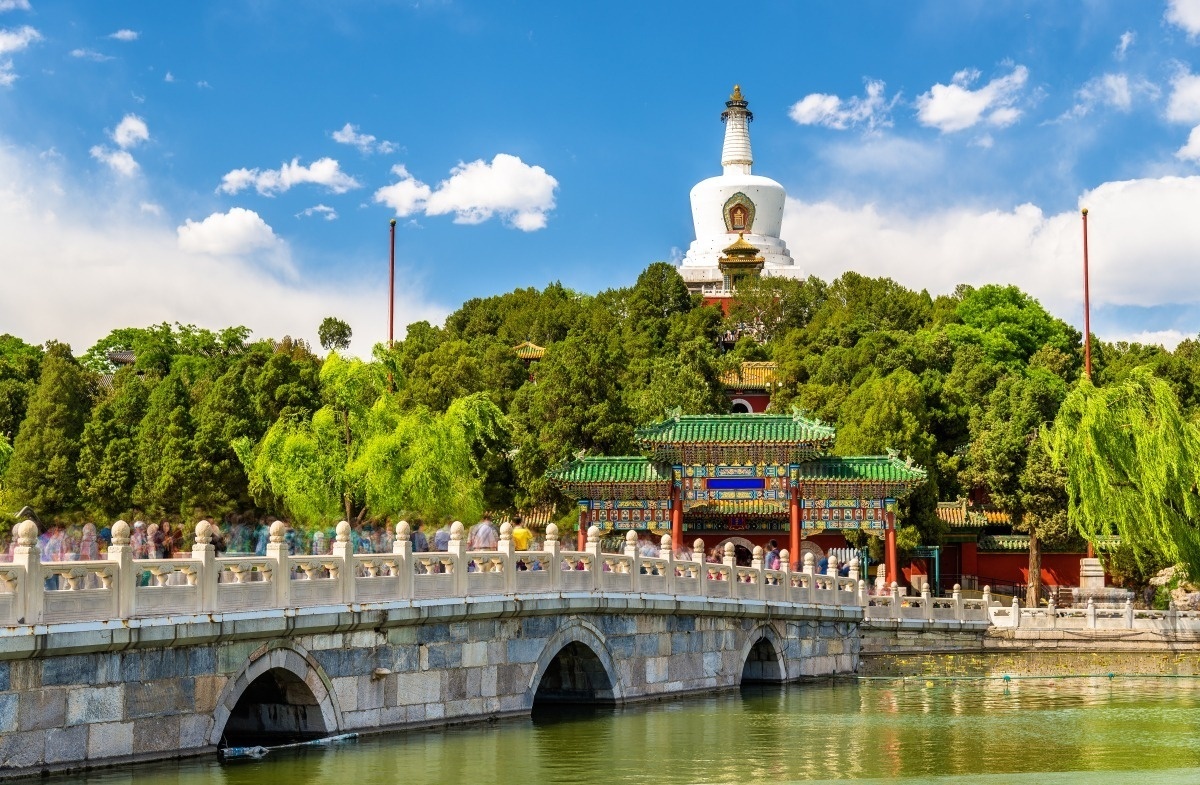
Der Nordmeer Park ist auch ein prähistorisches Park in Peking, das im Jahr 1179 schon angefangen zu bauen. Er ist ein kaiserlicher Park und hat einen großen See, um den wird es „grün“ gedeckelt. Im Sommer ist dort ein schöner Ort zum Sommerfrischen. Im Frühling wäre es noch besser, weil, es gibt drei Inselchen im See, Einer davon heißt „Qionghua“, das ist auch Eine von „Yanjing 8 Landschaften von Peking - Jade Inselchen im schattigen Frühling. Ein aus weißen Marmor bestehend Turm ist sehr berühmt und auffallend. Im Park kannst Du nur was Frisches und Schönes fühlen.
Der Beihai-Park (chinesisch 北海公園 / 北海公园, Pinyin Běihăi Gōngyuán) in Peking ist einer der typisch chinesischen Gärten. Er liegt nordwestlich der Verbotenen Stadt.
Von der Dschurdschischen Jin-Dynastie bis zur Zeit der Ming- und Qing-Kaiser war der Nordsee (Beihai) gemeinsam mit dem Mittelsee (Zhonghai) und später auch dem Südsee (Nanhai) Teil der verbotenen Stadt. Während das Gelände um die beiden letztgenannten Seen heute unter dem Namen Zhongnanhai als Sitz von Regierung und Partei dient und daher hermetisch abgeriegelt ist, steht der Beihai einschließlich des sich an seinen Ufern erstreckenden Parks seit 1925 der Öffentlichkeit zur Verfügung.
Der Jin-Kaiser Shizong begann 1179 n. Chr. mit der Errichtung eines Sommerpalastes und der Anlage dieses Parks. Kaiser Kublai Khan machte ihn 1260 zu seiner Residenz, indem er die „Halle der Weiten Kühlung“ bezog. An ihrer Stelle wurde durch die Qing-Kaiser ab 1651 die lamaistische „Weiße Pagode“ erbaut, die noch heute den Park dominiert. Kaiser Qianlong (1736–1795) führte umfangreiche Erweiterungsarbeiten durch. Nahezu alle heutigen Bauten in diesem Park stammen aus dieser Bauperiode.
北海公园位于中华人民共和国北京市城区的中偏北部,故宫和景山的西北侧,始建于宋辽金时代,是世界上现存建园时间最早的皇家宫苑。北海的布局以琼华岛为主体,在岛的顶端建有标志性建筑永安寺白塔,与南岸的团城、北岸的宫苑群遥相呼应,相互借景,构成园林的南北中轴线。
北海先后历经辽、金、元、明、清五朝的兴建,历史悠久且重建时承袭较多。它始建于辽代,当时位于辽南京城的东北郊外,附近风景秀丽,于是统治者便疏浚水系,仿照蓬莱仙境建造了瑶屿行宫。金大定十九年(1179年)起,在瑶屿行宫的基础上叠石造山,修建了广寒殿,同时将湖泊称为“西华潭”,瑶屿改名为“琼华岛”,将整座离宫命名为“大宁宫”(后来又改称“万宁宫”)。
元代以琼华岛为中心规划了大都城,忽必烈在中统三年(1262年)、至元四年(1267年)和至正八年(1348年)三次扩建琼华岛,构成了“一池三山”的蓬莱仙境格局. 在旧殿基础上兴建了重檐圆顶的仪天殿,岛的四周也围起了石墙,叫圆城,就是如今的团城。将山命名为“万寿山”(或“万岁山”),北海命名为“太液池”。这样,琼岛是“蓬莱”,团城就是“瀛洲”,所以仪天殿也叫“瀛洲圆殿”。同时,还在太液池的东岸修建了大内皇宫,在西岸建造了隆福宫和兴圣宫,构成一座巨大的宫苑——“上苑”。
明成祖朱棣永乐十八年(1420年),明王朝定都北京后,在太液池以东建造了皇宫紫禁城,并向南拓展水系,形成中海、南海,与北海一起合称“西苑”,划入皇城的范围。万历七年(1579年),广寒殿倒塌,此后一直没有修复,直到清代顺治八年(1651年),才应喇嘛所请,在广寒殿旧址上兴建了白塔,并将岛南部的宫殿改建为永安寺。清代乾隆六年(1741年)起,北海开始了长达三十年的扩建,除了在琼华岛的四面广建庭轩楼榭外,还在太液池的北岸和东岸增加了许多建筑群,形成今日的格局。
北海公園(ほっかいこうえん、簡体字中国語: 北海公园、拼音: )は中華人民共和国北京市にあり、故宮の北西に位置する宮廷庭園(旧皇帝御園)である[1][2]。華北を征服した元朝のクビライは、この島を中心に大都を設計した。 遼代に作られた離宮を起源とし、金、モンゴル、明、清と継承された[1]。モンゴル時代には政治的貢献の大きかった長春道人・丘処機に与えられ、北海の中央にある瓊華島に道観(道教の寺院)が作られた[1]。のちに帝位についたクビライが 瓊華島に住んだこともある[1]。公園として一般開放されたのは、中華人民共和国建国後のことである[2]。
Beihai Park (Chinese: 北海公園; 北海公园)is a public park and former imperial garden located in the northwestern part of the Imperial City, Beijing. First built in the 11th century, it is among the largest of all Chinese gardens and contains numerous historically important structures, palaces, and temples. Since 1925, the place has been open to the public as a park. It is also connected at its northern end to the Shichahai.
The park has an area of more than 69 hectares (171 acres), with a lake that covers more than half of the entire park. At the center of the park is an island called Jade Flower Island (瓊華島; 琼华岛; Qiónghuádǎo), whose highest point is 32 meters (105 ft).
Beihai literally means "Northern Sea". There are also corresponding Central (Zhonghai) and Southern (Nanhai) "Seas" elsewhere. These latter two are joined inside a complex of buildings known after them as Zhongnanhai; it is the home of China's paramount leaders.
The Beihai Park, as with many of Chinese imperial gardens, was built to imitate renowned scenic spots and architecture from various regions of China such as Lake Tai, the elaborate pavilions and canals of Hangzhou and Yangzhou, the delicate garden structures in Suzhou and others all served as inspirations for the design of the numerous sites in this imperial garden. The structures and scenes in the Beihai Park are described as masterpieces of gardening technique that reflects the style and the superb architectural skill and richness of traditional Chinese garden art.[1]
Le Parc Beihai (chinois simplifié : 北海公园 ; chinois traditionnel : 北海公園 ; pinyin : ) est un jardin impérial de Pékin, vieux de plus de 1 000 ans. Le nom de Beihai (chinois : 北海 ; pinyin : Běihăi, littéralement la « mer du nord ») évoque le lac qui forme l'essentiel de sa superficie et se trouve justement au nord du Zhongnanhai (littéralement les « mers du sud et du centre »).
La construction du parc a commencé au Xe siècle, sous la dynastie Liao. Avec une superficie supérieure à 68 ha, il s'agit d'un des plus grands jardins chinois, aménagé autour du lac, contenant de nombreux bâtiments historiques, parmi lesquels des temples et des palais, comme cette stūpa blanche, emblème du parc, bâti sur une île au milieu du lac.
Comme beaucoup de jardins impériaux chinois, il a été construit dans un esprit d'imitation des paysages et architectures les plus remarquables de Chine. Auparavant clos, le parc est aujourd'hui ouvert au public et facilement accessible via les transports en commun.
Il parco Beihai (cinese tradizionale 北海公园, pinyin Běihǎi Gōngyuán) è un giardino imperiale a nord-ovest della Città proibita di Pechino. Costruito in origine nel X secolo, è un tipico giardino cinese, aperto al pubblico solo dal 1925 e parte della Città proibita fino alla fine della dinastia Qing nel 1911.
Il parco si estende su più di 700.000 m², con il Lago Settentrionale o Beihai che ne copre più di metà. Al centro si trova un'isola chiamata Qióng-huá (琼华) alta fino a 32 metri sul livello del lago. Il grande specchio d'acqua detto Taiye si collega al Lago Posteriore o Houhai e al Lago Medio o Zhonghai, intorno a cui si trova lo Zhongnanhai. Beihai significa letteralmente Lago Settentrionale.
El Parque Beihai (en chino tradicional, 北海公園; en chino simplificado, 北海公园; pinyin, Běihǎi Gōngyuán) es un jardín imperial situado al noroeste de la Ciudad Prohibida en Pekín, China. Construido en el siglo X, es uno de los mayores jardines chinos, y contiene muchas estructuras, palacios y templos de importancia histórica. Desde 1925, ha estado abierto al público como un parque. Está conectado por el norte con el Shichahai.
El parque tiene una superficie de más de 69 hectáreas. Contiene un lago que cubre más de la mitad de todo el parque. En el centro hay una isla llamada Isla Qiónghuá (琼华) cuyo punto más alto tiene 32 m de altura. En el norte del parque hay un gran estanque llamado Estanque Taiye, que conecta los otros dos estanques, Mar Central y Mar del Sur (Zhongnanhai). El Estanque Taiye también se llama Beihai, que significa "Mar del Norte". El complejo de edificios alrededor de Zhongnanhai albergan la residencia de los líderes supremos de China.
El Parque Beihai, como muchos jardines imperiales chinos, se construyó para imitar lugares turísticos famosos y la arquitectura de diferentes regiones de China. En el Lago Taihu, los elaborados pabellones y canales de Hangzhou y Yangzhou, las delicadas estructuras de los jardines de Suzhou sirvieron como inspiración para el diseño de numerosos lugares en este jardín. Las estructuras y escenas del Parque Beihai se describen como obras maestras que reflejan el estilo y la excepcional arquitectura y riqueza de los jardines tradicionales chinos.1
Парк Бэйхай (кит. трад. 北海公園, упр. 北海公园, пиньинь Běihăi Gōngyuán) — императорский сад к северо-западу от Запретного города в Пекине. Первоначально заложен в X веке. Числится среди крупнейших китайских садов и содержит множество исторически значимых построек, дворцы и храмы. Во времена правления династий Ляо, Цзинь, Юань, Мин и до падения династии Цин в 1911 году был императорским парком. Это место было связано с Запретным Городом, но с 1925 года сад был открыт публике.
Парк имеет площадь более 69 гектаров; озеро Бэйхай занимает более половины территории парка. В центре парка на 32 м возвышается остров Цюнхуа (琼华). К северу от парка находится озеро Цяньхай, к югу — Чжунхай (Среднее море).
Бэйхай дословно значит «Северное море». Также имеются Среднее (Чжунхай) и Южное (Наньхай) моря. Комплекс строений вокруг двух вышеупомянутых озёр включает дома, в которых живёт китайское высшее руководство.
Парк Бэйхай, как и многие китайские сады, был построен для подражания знаменитым живописным местам и архитектурным объектам разных частей Китая; озеро Тайху, искусно сделанные павильоны и каналы в Ханчжоу и Янчжоу, изысканные постройки китайского сада в Сучжоу и другие служили вдохновением для творцов многочисленных достопримечательностей этого императорского сада. Постройки и пейзажи этого парка являются шедеврами ландшафтного дизайна, отображающими стиль и великолепные архитектурные навыки и богатство искусства создания традиционного китайского сада.
 Beijing Shi-BJ
Beijing Shi-BJ
 China
China
 Chinese Super League 2019
Chinese Super League 2019

 Financial
Financial
 ***Global Financial Center
***Global Financial Center

 History
History
 M 1500 - 2000 AD
M 1500 - 2000 AD

 History
History
 L 1000 - 1500 AD
L 1000 - 1500 AD

 History
History
 N 2000 - 2100 AD
N 2000 - 2100 AD

 International cities
International cities
 ***Global Urban Economic Competitiveness
***Global Urban Economic Competitiveness
 ITU World Championship Series
ITU World Championship Series
 Beijing-Hangzhou Grand Canal
Beijing-Hangzhou Grand Canal
 League of Legends
League of Legends
 League of Legends World Championship
League of Legends World Championship
 Olympic Summer Games
Olympic Summer Games
 2022 Winter Olympics
2022 Winter Olympics
 Silk road
Silk road
 Shanghai Cooperation Organization
Shanghai Cooperation Organization

 Sport
Sport
 Triathlon
Triathlon

 Vacation and Travel
Vacation and Travel

 World Heritage
World Heritage
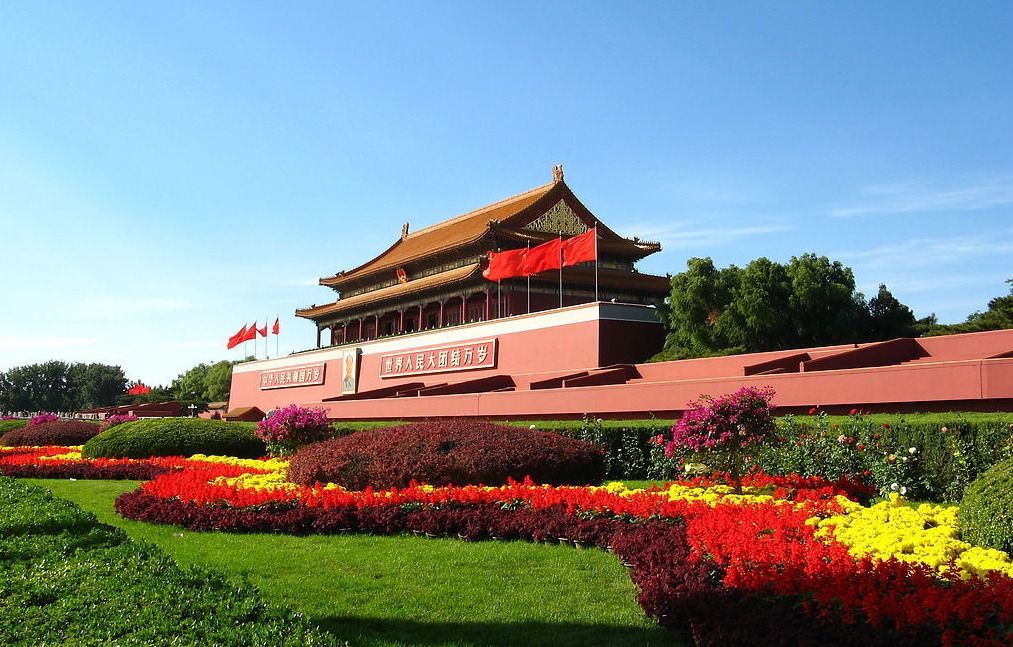
Peking (chinesisch 北京, Pinyin Běijīng, W.-G. Pei-ching auch Beijing, ![]() [pei˨˩tɕiŋ˥˥], deutsch historisch Pekingen[2]) ist die Hauptstadt der Volksrepublik China. Der Name bedeutet Nördliche Hauptstadt (vgl. Nanjing für Südliche Hauptstadt). Peking hat eine über dreitausendjährige Geschichte und ist heute eine regierungsunmittelbare Stadt, das heißt, sie ist direkt der Zentralregierung unterstellt und damit Provinzen, autonomen Gebieten und Sonderverwaltungszonen gleichgestellt.
[pei˨˩tɕiŋ˥˥], deutsch historisch Pekingen[2]) ist die Hauptstadt der Volksrepublik China. Der Name bedeutet Nördliche Hauptstadt (vgl. Nanjing für Südliche Hauptstadt). Peking hat eine über dreitausendjährige Geschichte und ist heute eine regierungsunmittelbare Stadt, das heißt, sie ist direkt der Zentralregierung unterstellt und damit Provinzen, autonomen Gebieten und Sonderverwaltungszonen gleichgestellt.
Das gesamte 16.807 Quadratkilometer große (etwas größer als Schleswig-Holstein) Verwaltungsgebiet Pekings hat 21,5 Millionen Einwohner (Stand: März 2016).[3] Es stellt kein zusammenhängendes Stadtgebiet dar, mit seiner dominierenden ländlichen Siedlungsstruktur ist es eher mit einer Provinz vergleichbar.[4] Von der Gesamtbevölkerung sind 11,8 Millionen registrierte Bewohner mit ständigem Wohnsitz (戶口 / 户口, hùkǒu) und 7,7 Millionen temporäre Einwohner (流動人口 / 流动人口, liúdòng rénkǒu) mit befristeter Aufenthaltsgenehmigung (暫住證 / 暂住证, zànzhùzhèng).[5] Wird die Kernstadt (hohe Bebauungsdichte und geschlossene Ortsform) als Grundlage genommen, leben in Peking 7,7 Millionen Menschen mit Hauptwohnsitz (2007).[6] Der Ballungsraum (einschließlich Vororte) hat 11,8 Millionen Einwohner (2007).[7] Ab 2017 soll die Metropole Kern einer Megalopolis von 130 Millionen Einwohnern namens Jing-Jin-Ji werden.
Peking stellt als Hauptstadt das politische Zentrum Chinas dar. Aufgrund der langen Geschichte beherbergt Peking ein bedeutendes Kulturerbe. Dies umfasst die traditionellen Wohnviertel mit Hutongs, den Tian’anmen-Platz (chinesisch Platz am Tor des Himmlischen Friedens), die 1987 von der UNESCO zum Weltkulturerbe erklärte Verbotene Stadt, den neuen und alten Sommerpalast und verschiedene Tempel, wie z. B. den Himmelstempel, den Lamatempel und den Konfuziustempel.(2012)
Beijing ist auch eine der berühmtesten kulturhistorischen Städte mit einer ereignisreichen Geschichte in der Welt und zählt zu den sieben alten Hauptstädten Chinas. Vor 700 000 Jahren lebten hier schon die sogenannten „Peking-Menschen". Die Stadt Beijing wurde 938 der provisorische Sitz der Liao-Dyna-stie (907-1125) und diente 800 Jahre lang als die Hauptstadt der Jin- (1115-1234), der Yuan-(1279-1368). der Ming-(1368-1644) und der Qing-Dynastie (1644-1911). Zahlreiche weltbekannte Sehenswürdigkeiten und historische Stätten sind auf den heutigen Tage erhalten geblieben, darunter der Kaiserpalast als größter Palastkomplex der Welt, die Große Mauer als eines der acht Weltwunder, der Himmelstempel als weltweit größter Opferaltar für den Himmel, die Ming-Gräber als konzentrierte kaiserliche Grabanlagen in der Welt und der Sommerpalast als weltweit größte kaiserliche Parkanlage.
Die Vororte Beijings sind von Bergen umgeben und haben schöne Landschaft. Dort sind alte Tempel, Teiche, Wasserfälle und dörfliches Idyll zu sehen. Darüber hinaus wird das Stadtbild von einer hohen Anzahl von modernen Gebäuden geprägt. Auch große Vergnügungsparks, Zoos, botanische Gärten, städtische öffentliche Plätze und Parks in der Stadt üben eine große Anziehungskraft auf Touristen aus.
北京市(ペキンし、中国語: 北京市、拼音: )は、中華人民共和国の首都である。
行政区画上は直轄市であり、中国の華北の中央に位置する。人口は2152万(2014年)であり、中国では上海に次ぐ第二の都市。世界有数のメガシティであり、極めて高い影響力を有する世界都市でもある。古くは大都・燕京・北平とも呼ばれた。
春秋戦国時代には燕の首都で薊(けい)と称された。周の国都洛陽からは遠く離れ、常に北方の匈奴などの遊牧民族の侵入による被害を受ける辺境であった。秦漢代には北平(ほくへい)と称されるが、満州開発が進み、高句麗など周辺国の勢力が強大となると、戦略上、また交易上の重要な拠点として重視されるようになった。北京市に隣接する河北省涿郡(たくぐん)は三国志の英雄劉備の故郷で知られるとともに隋の煬帝が築いた大運河の北の起点とされている。
唐末五代の騒乱期、内モンゴルから南下してきた遼朝は、後晋に対し軍事支援を行った代償として北京地方を含む燕雲十六州を割譲された。遼はこの都市を副都の一つ南京と定めた。その後金朝が遼を滅ぼし支配権を獲得すると、金は北京に都城を定め中都とした。更にモンゴル帝国(元朝)が金を滅ぼすと大都として元朝の都城となり、カラコルムに代わってモンゴル帝国の中心となった。
朱元璋が元を北方に駆逐し明朝が成立すると、名称は北平に戻され、都城は南京に定められた。しかし、燕王に封じられ北京を拠点とした朱棣(後の永楽帝)は、1402年に建文帝に対し軍事攻撃を行い政権を奪取。皇帝に即位した後北京遷都を実行し地名を北京に改めた。辛亥革命後は中華民国北洋政府は北京を首都と定めたが、南京を首都と定めた蒋介石を中心とする国民政府は、「政府直轄地域」を意味する直隷省を1928年6月15日に河北省へ、北の首都を意味する北京を北平(ほくへい、ベイピンBěipíng)へと、それぞれ改称した。1937年から1945年まで続いた日本軍占領期は北京の名称が用いられ(公式には1940年に改名)、日本の敗戦によって再び北平に改称された。
1949年10月1日の中華人民共和国成立により新中国の首都とされた北京(北平)は再び北京と改称され現在に至っている。しかし、中華人民共和国の存在を承認せず、南京を公式な首都として大陸地区への統治権を主張する中華民国(台湾)では、現在でも公式名称として「北平」の名称が用いられている。
Beijing (/beɪˈdʒɪŋ/;[10] Mandarin: [pèi.tɕíŋ] (![]() listen)), formerly romanized as Peking,[11] is the capital of the People's Republic of China, the world's third most populous city proper, and most populous capital city. The city, located in northern China, is governed as a municipality under the direct administration of central government with 16 urban, suburban, and rural districts.[12] Beijing Municipality is surrounded by Hebei Province with the exception of neighboring Tianjin Municipality to the southeast; together the three divisions form the Jingjinji metropolitan region and the national capital region of China.[13]
listen)), formerly romanized as Peking,[11] is the capital of the People's Republic of China, the world's third most populous city proper, and most populous capital city. The city, located in northern China, is governed as a municipality under the direct administration of central government with 16 urban, suburban, and rural districts.[12] Beijing Municipality is surrounded by Hebei Province with the exception of neighboring Tianjin Municipality to the southeast; together the three divisions form the Jingjinji metropolitan region and the national capital region of China.[13]
Beijing is an important capital and global power city, and one of the world's leading centers for politics, economy and business, finance, education, culture, innovation and technology, architecture, language, and diplomacy. A megacity, Beijing is the second largest Chinese city by urban population after Shanghai and is the nation's political, cultural, and educational center.[14] It is home to the headquarters of most of China's largest state-owned companies and houses the largest number of Fortune Global 500 companies in the world.[15] It is also a major hub for the national highway, expressway, railway, and high-speed rail networks. The Beijing Capital International Airport has been the second busiest in the world by passenger traffic since 2010,[16] and, as of 2016, the city's subway network is the busiest and second longest in the world.
Combining both modern and traditional architecture, Beijing is one of the oldest cities in the world, with a rich history dating back three millennia. As the last of the Four Great Ancient Capitals of China, Beijing has been the political center of the country for most of the past eight centuries,[17] and was the largest city in the world by population for much of the second millennium A.D.[18] Encyclopædia Britannica notes that "few cities in the world have served for so long as the political headquarters and cultural center of an area as immense as China."[19] With mountains surrounding the inland city on three sides, in addition to the old inner and outer city walls, Beijing was strategically poised and developed to be the residence of the emperor and thus was the perfect location for the imperial capital. The city is renowned for its opulent palaces, temples, parks, gardens, tombs, walls and gates.[20] It has seven UNESCO World Heritage Sites – the Forbidden City, Temple of Heaven, Summer Palace, Ming Tombs, Zhoukoudian, and parts of the Great Wall and the Grand Canal – all popular locations for tourism.[21] Siheyuans, the city's traditional housing style, and hutongs, the narrow alleys between siheyuans, are major tourist attractions and are common in urban Beijing.
Pékin2 (en chinois : 北京 ; pinyin : běijīng ; API : [pe˨˩˦i.tɕi˥ŋ] Écouter la prononciation en mandarin, littéralement « capitale du nord »), également appelée Beijing, est la capitale de la République populaire de Chine. Située dans le nord du pays, la municipalité de Pékin (北京市, abrégé en 北京), d'une superficie de 16 800 km2, borde la province du Hebei ainsi que la municipalité de Tianjin. Pékin est considérée comme le centre politique et culturel de la Chine, tandis que Hong Kong et Shanghai dominent au niveau économique.
D'abord ville périphérique de l'empire chinois sous les Han et les Tang, elle prend de l'importance lorsque les Jurchen, qui fondent la dynastie Jin, la choisissent comme leur capitale principale en 1153. Le prince mongol Kubilai Khan en fait de même sous le nom de Dadu (« grande métropole »), enfin les Ming y transfèrent leur administration en 1421, parachevant le choix de Pékin comme capitale de la Chine. Située à proximité de la Grande Muraille, Pékin abrite des monuments célèbres comme la Cité interdite et le Temple du ciel, qui sont inscrits au patrimoine mondial. De nombreuses réalisations architecturales et structurelles ont modifié la ville à l'occasion des Jeux olympiques d'été dont elle a été l'hôte en 2008. Beijing a été choisie par le CIO pour organiser les Jeux olympiques d'hiver de 2022 et sera la première ville à avoir accueilli les deux éditions de l'évènement sportif international.
Avec 21,15 millions d'habitants en 2013, Pékin est la deuxième ville la plus peuplée de Chine après Shanghai. La zone urbaine compte quant à elle 18 millions d'habitants. Le parler pékinois forme la base du mandarin standard. D'un point de vue économique, Pékin est la troisième ville de Chine par le PIB total derrière Shanghai et Hong Kong. Elle connaît une croissance économique très rapide, nettement plus de 10 % par an dans les années 2000. Un nouveau Central business district (CBD) est en construction.
Pechino (AFI: /peˈkino/[1]; in cinese 北京S, BěijīngP, letteralmente "capitale del nord", ) è la capitale della Cina e della municipalità omonima.
L'intera municipalità ha dimensioni pari a poco più della metà del Belgio avendone però quasi il doppio degli abitanti (21.516.000[senza fonte]). Pechino è la seconda città più popolata della Cina dopo Shanghai, la capitale di Stato più popolata al mondo, e la seconda città del mondo per popolazione. Confina esclusivamente con la provincia dell'Hebei e a sud-est con la municipalità di Tientsin.
Pekín, Pequín o Beijing (chino simplificado y tradicional: 北京, pinyin: Běijīng, Wade-Giles: Pei-ching, pronunciado: (![]() escuchar), literalmente «capital del Norte») es uno de los cuatro municipios que, junto con las veintidós provincias, cinco regiones autónomas y dos regiones administrativas especiales, conforman la República Popular China. Además Pekín es la capital del país y una de las ciudades más pobladas del mundo con 21 150 000 personas en 2013.2
escuchar), literalmente «capital del Norte») es uno de los cuatro municipios que, junto con las veintidós provincias, cinco regiones autónomas y dos regiones administrativas especiales, conforman la República Popular China. Además Pekín es la capital del país y una de las ciudades más pobladas del mundo con 21 150 000 personas en 2013.2
Situada en la periferia de la antigua civilización china, Pekín se convirtió en el baluarte de las potencias extranjeras que ocuparon China del Norte entre los siglos X y XII. La dinastía Liao estableció aquí su capital meridional, la más acreditada de las cinco del reino. La dinastía Jin, la siguiente dinastía "bárbara" emprendió un amplio proyecto urbanístico a imagen de la capital de los Song septentrionales, Kaifeng. En 1215 los mongoles arrasaron la ciudad, pero 50 años después Kublai Kan decidió edificar en ella la nueva capital.
En la zona centro-sur del trazado hipodámico se hallaba la colosal villa imperial que contenía el complejo de palacios imperiales. El emperador Yongle, el tercer Ming, decidió trasladar la capitalidad a Pekín. Las murallas del lado septentrional fueron trasladadas más hacia el Sur para que el complejo palaciego imperial, la llamada Ciudad Prohibida, quedase exactamente en el centro del plano. Así la estructura del nuevo Pekín representa la cima del urbanismo tradicional chino, basado en la organización introducida por los mongoles así como en la estructura de los palacios imperiales de Kaifeng y Nankín además de tomar en consideración las normas de la geomancia china (風水).
Pekín es uno de los cuatro municipios de China que poseen un estatus provincial y están bajo el control directo del gobierno central. Pekín ha sido municipalidad desde la creación de la República Popular China. Es una de las ciudades más pobladas de China, tan sólo superada por Shanghái en cuanto a población. Es considerada el corazón cultural, político y social de China.
Пеки́н (кит. 北京, пиньинь: Běijīng, палл.: Бэйцзин, буквально: «Северная столица») — столица и один из городов центрального подчинения Китайской Народной Республики. Пекин с трёх сторон окружён провинцией Хэбэй и граничит с Тяньцзинем на юго-востоке.
Это крупнейший железно- и автодорожный узел и один из основных авиаузлов страны. Кроме того, Пекин является политическим, образовательным и культурным центром КНР, в то время как главными экономическими центрами считаются Шанхай и Гонконг. Вместе с тем, в последнее время всё больше берёт на себя роль локомотива предпринимательской деятельности и основного поля для создания инновационных предприятий.
Входит в число четырёх древних столиц Китая. В 2008 году в городе прошли Летние Олимпийские игры. В 2022 году в городе пройдут Зимние Олимпийские игры.
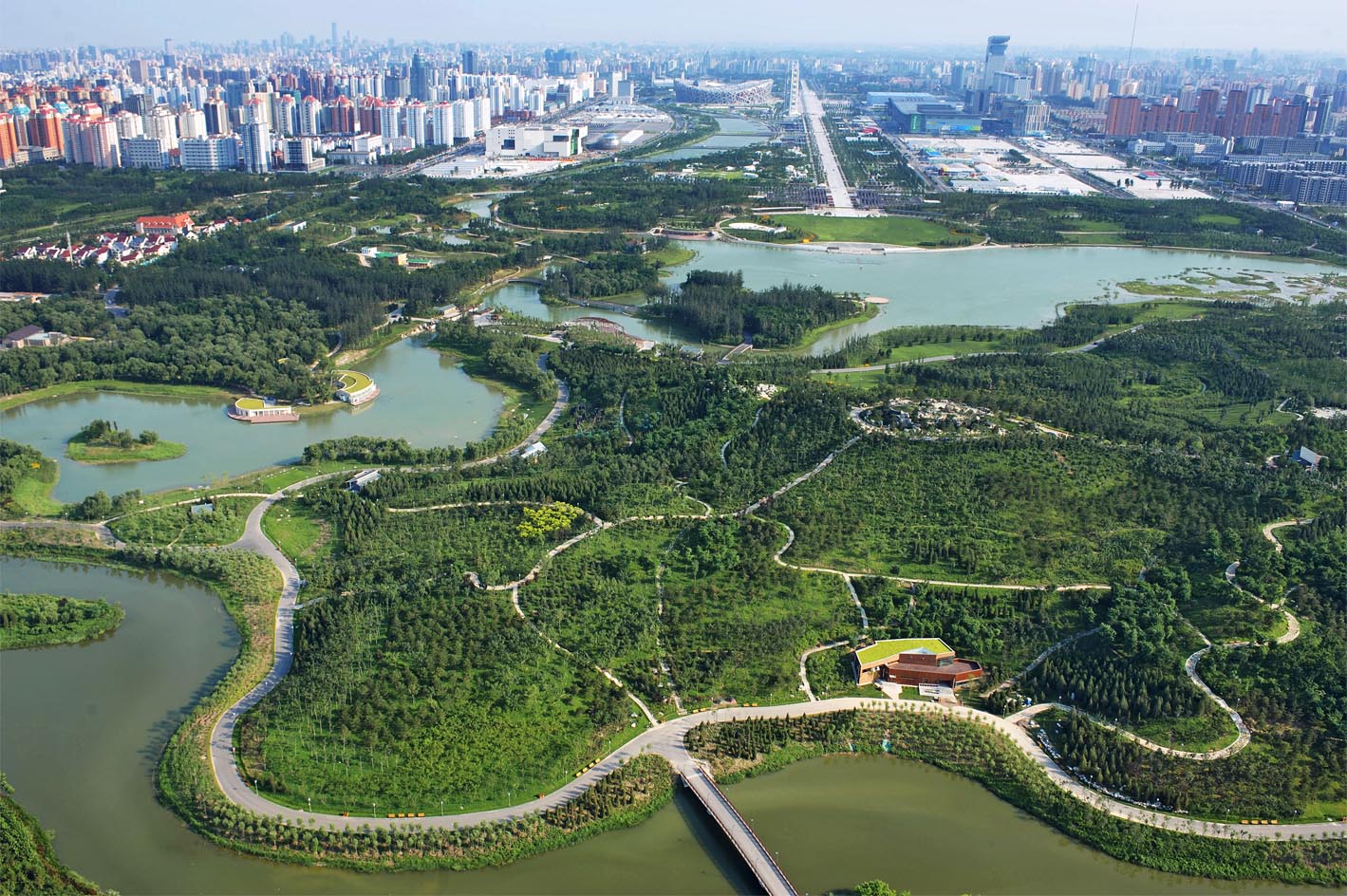
Das Olympic Green ist der Olympiapark, der für die Olympischen Sommerspiele 2008 in Peking neu errichtet wurde.
Der fast 800 Hektar große Komplex liegt im Norden der Stadt, rund 8,5 Kilometer in der Verlängerung der Achse nördlich der Verbotenen Stadt. Vor allem nach Norden hin hat das Gelände einen immer ausgeprägteren Parkcharakter mit Waldbestand, Wasserläufen und Zierseen sowie modellierten Hügeln, so dass der Pekinger Bevölkerung nun nach Abschluss der Olympischen Spiele ein echter Volkspark zur Verfügung steht.

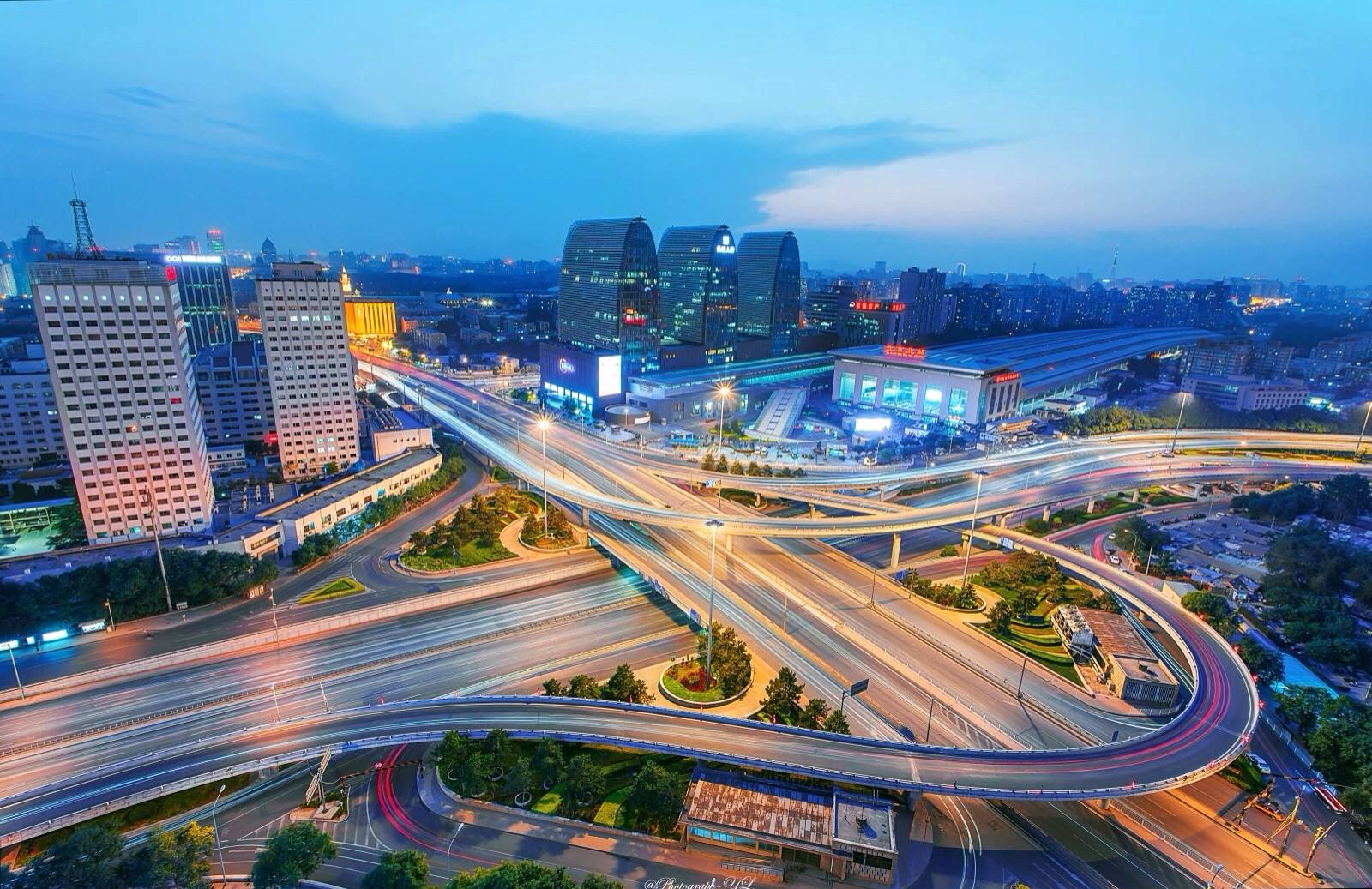

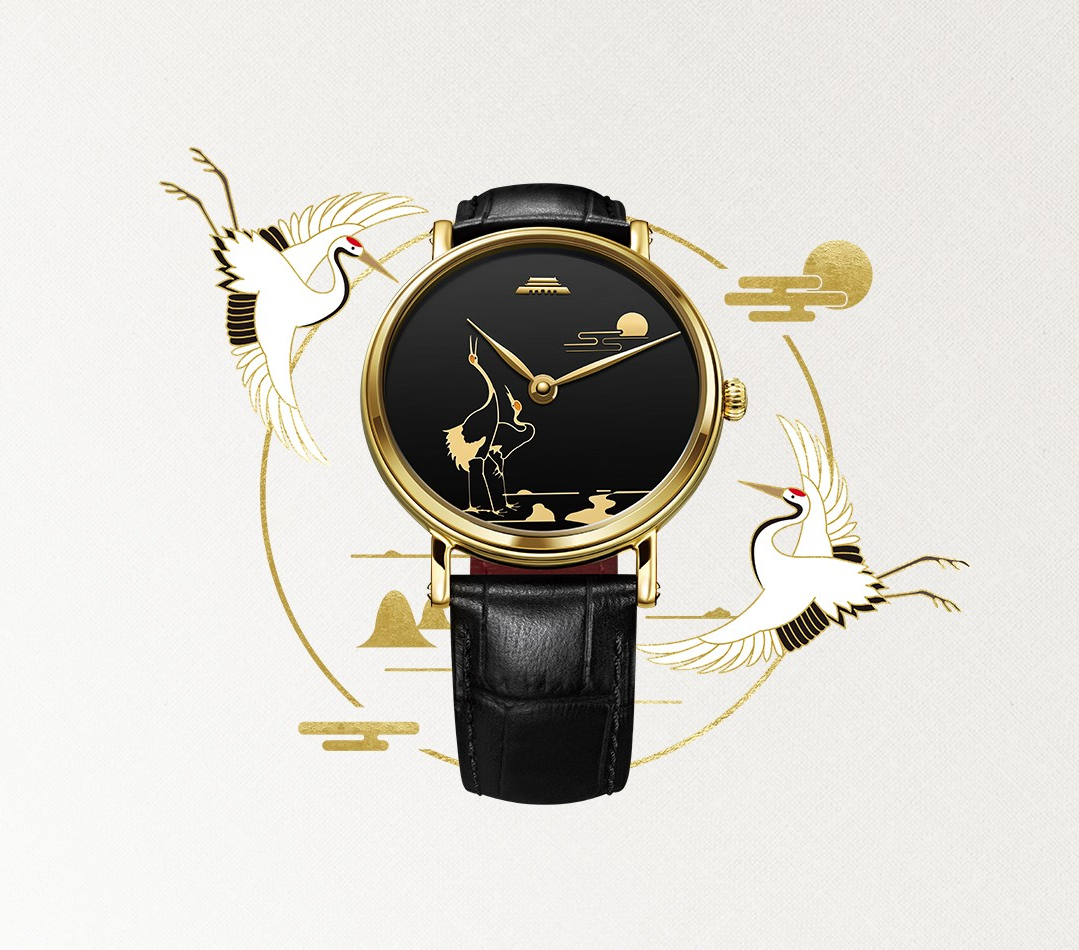





 Architecture
Architecture


 Automobile
Automobile
 Companies
Companies
 Life and Style
Life and Style
 Music
Music